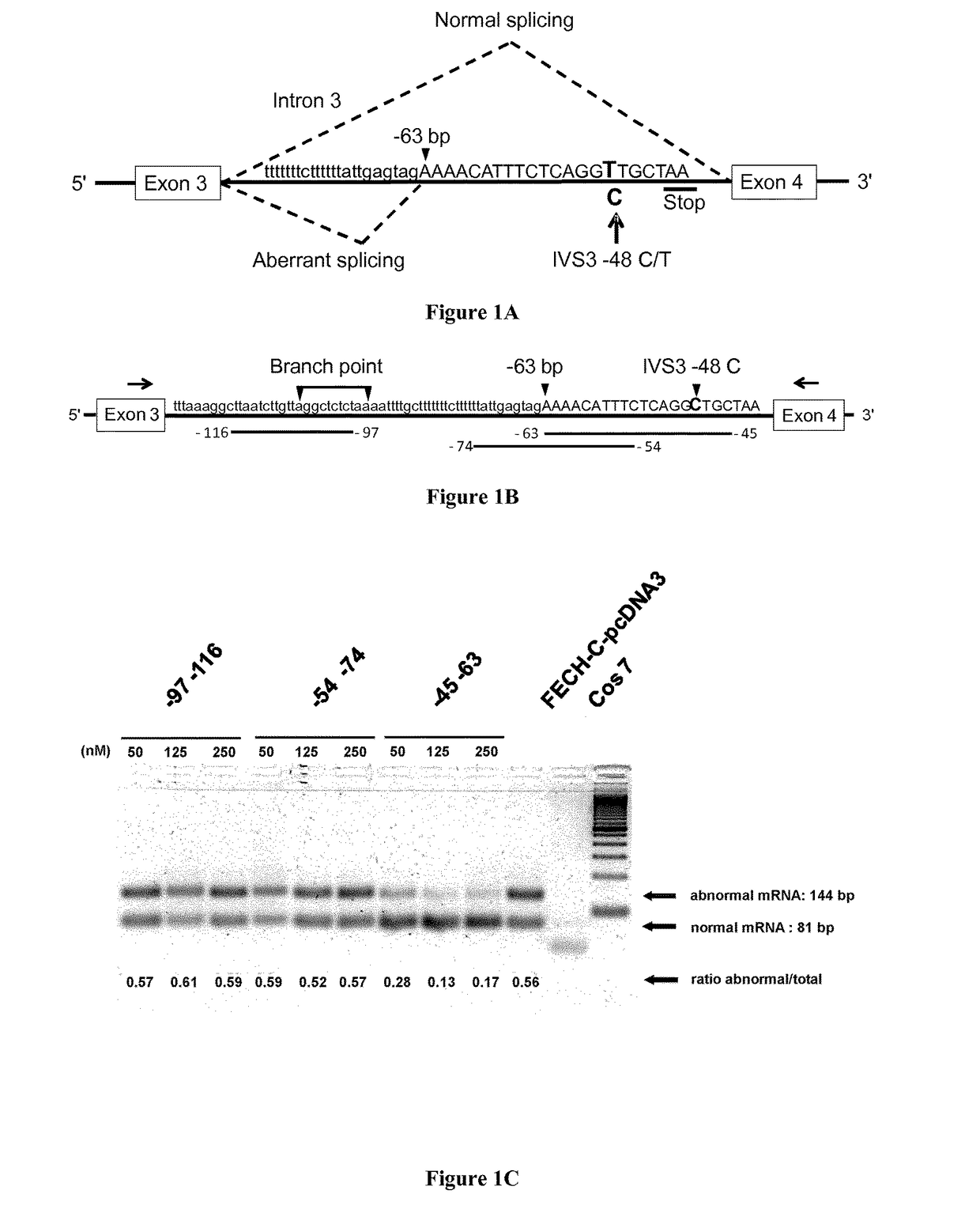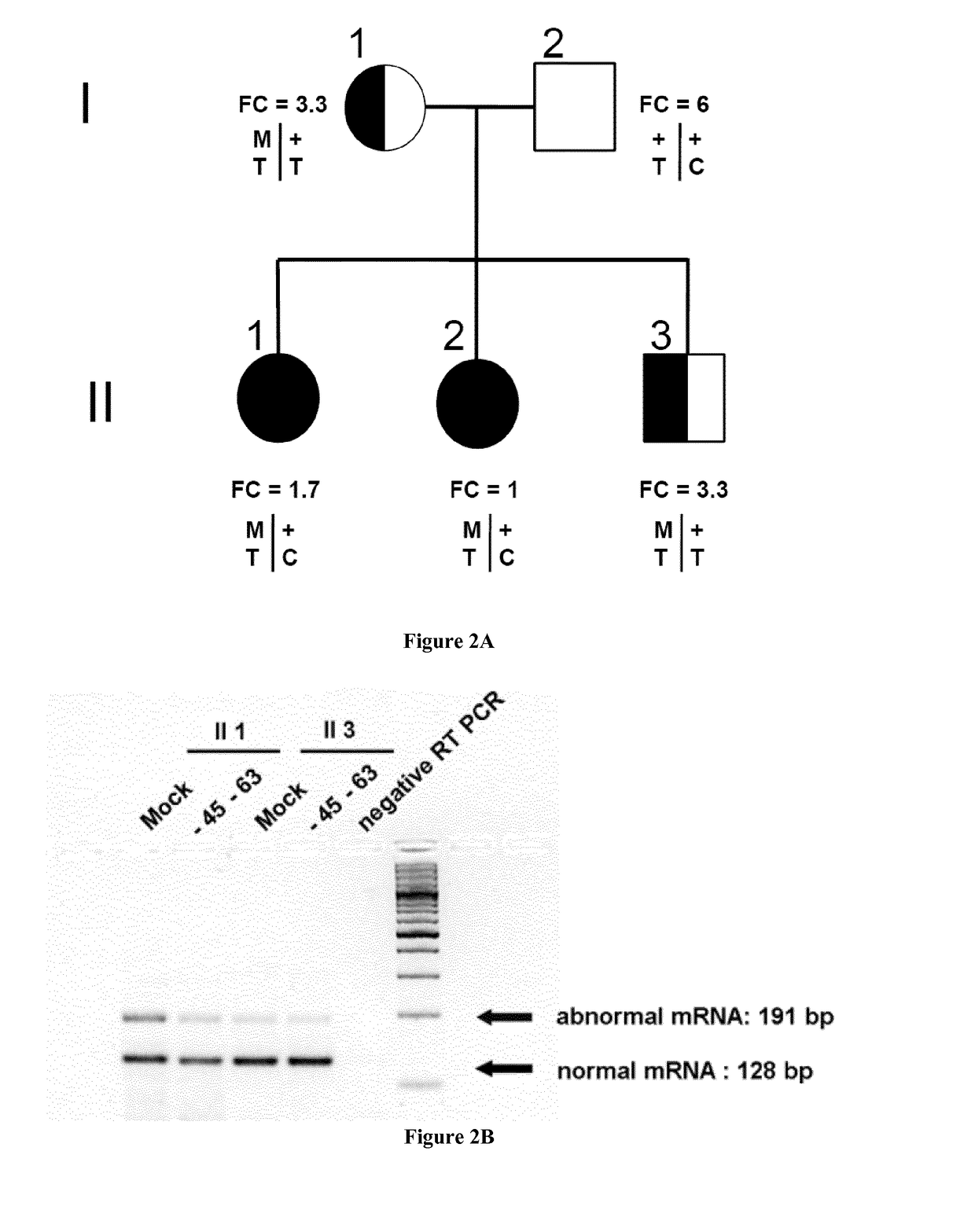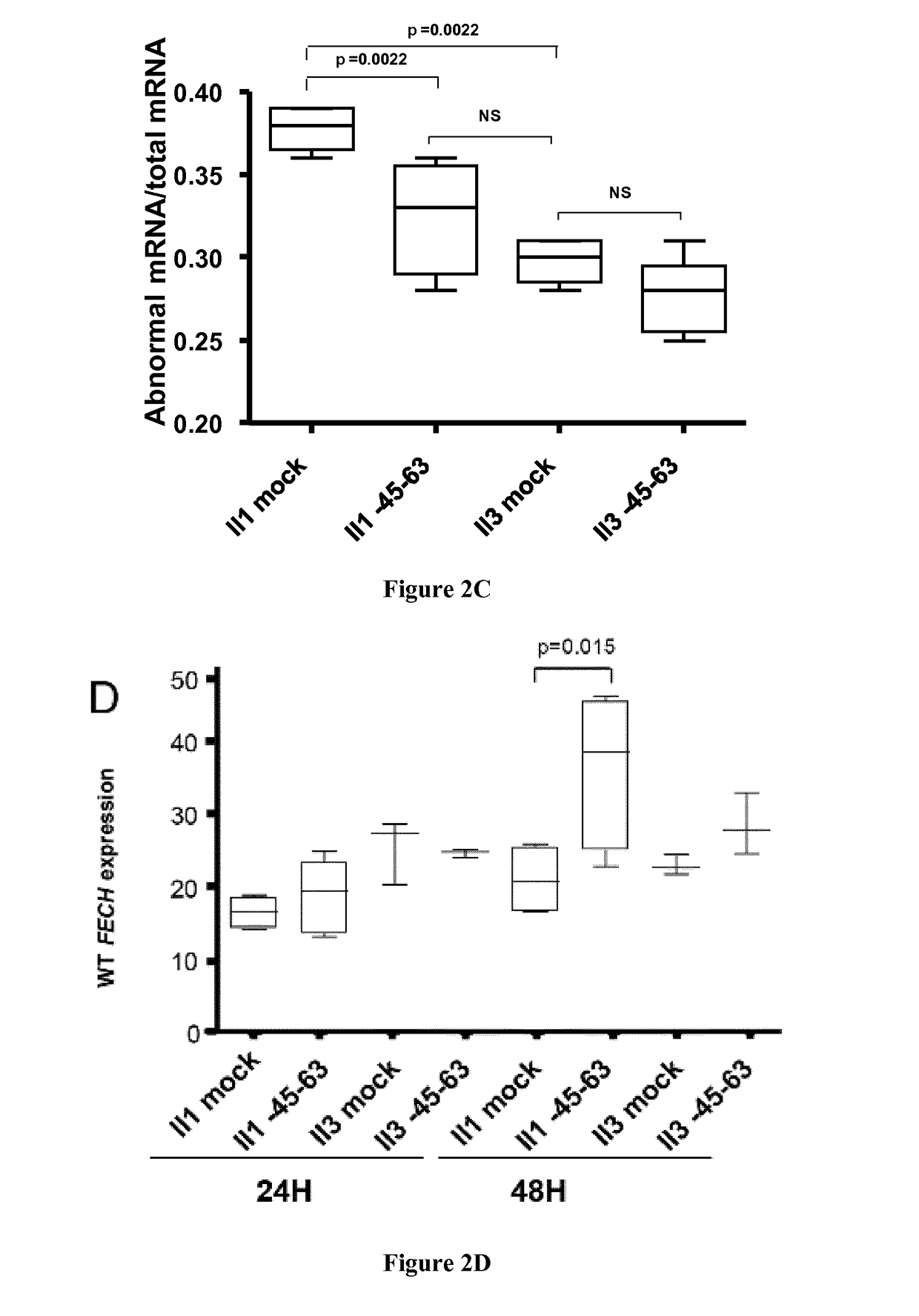Methods and pharmaceutical compositions for the treatment of erythropoietic protoporphyria
a technology of erythropoietic protoporphyria and pharmaceutical compositions, which is applied in the direction of drug compositions, lysates, extracellular fluid disorders, etc., can solve the problem of fech enzyme deficiency
- Summary
- Abstract
- Description
- Claims
- Application Information
AI Technical Summary
Benefits of technology
Problems solved by technology
Method used
Image
Examples
example 1
Antisense Oligonucleotide-Based Therapy in Human Erythropoietic Protoporphyria
[0054]Erythropoietic Protoporphyria (EPP, MIM 177000) is a rare inherited disorder caused by the partial mitochondrial deficiency of ferrochelatase (FECH, EC 4.99.1.1.), the last enzyme in the heme biosynthesis pathway (Puy et al. 2010) (Balwani et al. 1993). FECH is an inner mitochondrial membrane enzyme that catalyzes the insertion of the ferrous iron into free protoporphyrin IX (PPIX) to form heme. FECH deficiency in bone marrow erythroid cells leads to the overproduction and accumulation of PPIX in the erythrocytes, and then to secondary accumulation of PPIX in the plasma, skin, bile and feces (Puy et al. 2010). The commonest clinical manifestation is lifelong acute photosensitivity of sun-exposed skin, first appearing in early childhood. Although it is generally a benign disease, hepatic complications such as cholelithiasis or, in about 2% of cases, cirrhosis with rapidly fatal liver disease, may occu...
PUM
| Property | Measurement | Unit |
|---|---|---|
| affinity | aaaaa | aaaaa |
| photosensitivity | aaaaa | aaaaa |
| enzyme activity | aaaaa | aaaaa |
Abstract
Description
Claims
Application Information
 Login to View More
Login to View More - R&D
- Intellectual Property
- Life Sciences
- Materials
- Tech Scout
- Unparalleled Data Quality
- Higher Quality Content
- 60% Fewer Hallucinations
Browse by: Latest US Patents, China's latest patents, Technical Efficacy Thesaurus, Application Domain, Technology Topic, Popular Technical Reports.
© 2025 PatSnap. All rights reserved.Legal|Privacy policy|Modern Slavery Act Transparency Statement|Sitemap|About US| Contact US: help@patsnap.com



